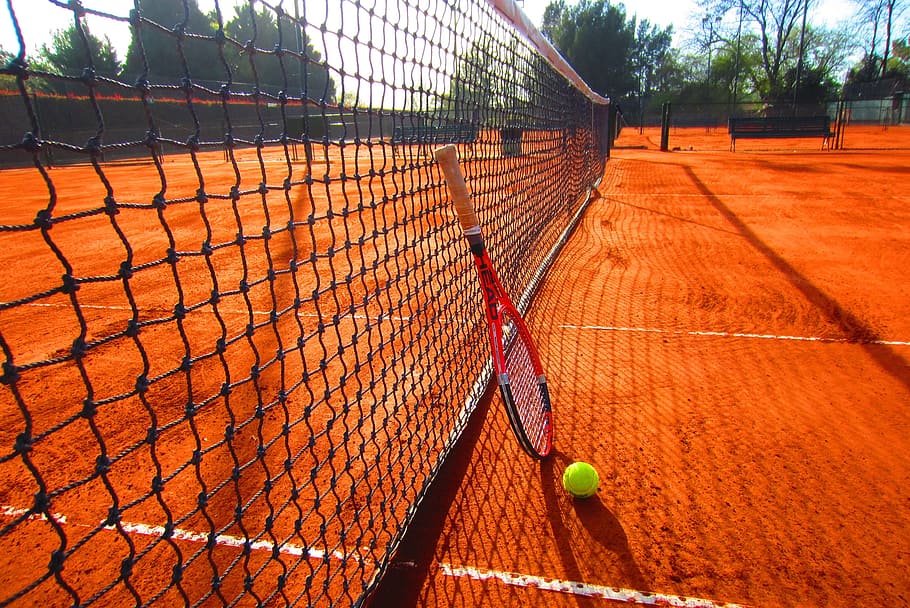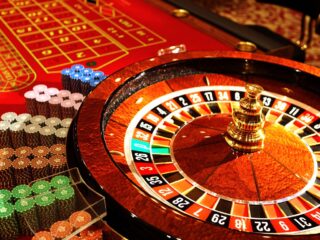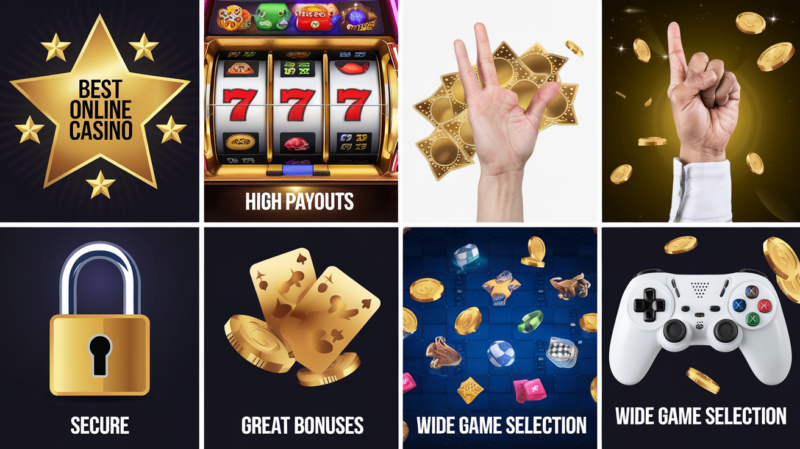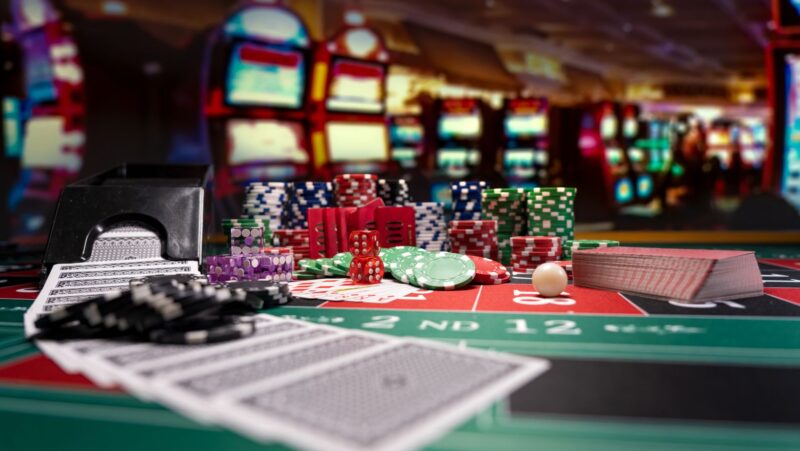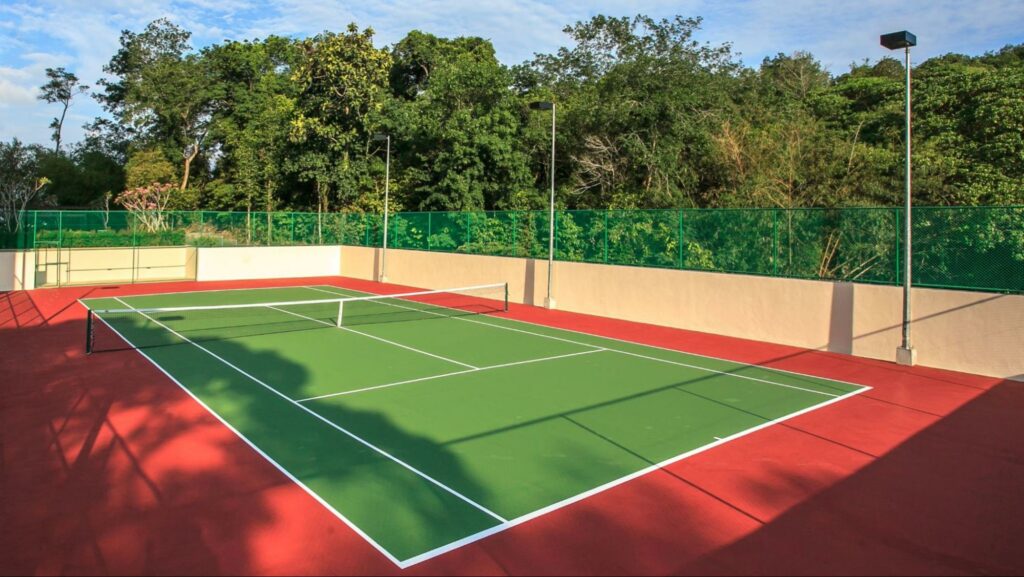
Tennis court surfaces play a pivotal role in the game, influencing everything from ball speed to player movement. Understanding the characteristics of various surfaces is essential for players, coaches, and enthusiasts alike. In this guide, we delve into the intricacies of tennis court surfaces, exploring their types, maintenance, and impact on gameplay.
Exploring Different Tennis Court Surfaces
Tennis courts come in various surfaces, each with its unique characteristics that significantly affect gameplay and player performance.
Hard Courts
Hard courts are one of the most common surfaces found in tennis facilities worldwide. Composed of asphalt or concrete, these surfaces offer a consistent bounce and medium-paced play. Hard courts are popular due to their durability and relatively low maintenance requirements.
Hard courts are renowned for their versatility, making them suitable for players of all playing styles. Whether you’re a baseline grinder or a serve-and-volley specialist, hard courts provide a balanced playing field.
Clay Courts
Clay courts, also known as red clay or Har-Tru courts, are characterized by their distinctive red-orange color. Made from crushed stone, brick, or shale, clay courts offer a slower playing surface with high ball bounce.
Clay courts reward players with patience and consistency, as the slower pace allows for longer rallies and strategic shot placement. Additionally, the forgiving nature of clay reduces the risk of impact-related injuries, making it an ideal surface for players prone to joint issues.
Grass Courts
Grass courts evoke a sense of tradition and elegance, epitomized by prestigious tournaments like Wimbledon. The natural grass surface provides a fast and low bounce, favoring aggressive serve-and-volley players.
Grass courts pose unique challenges due to their unpredictable nature, with ball bounce varying depending on factors like weather and court maintenance. Players must adapt quickly to the slick surface and exploit its advantages to succeed on grass.
Artificial Turf
Artificial turf courts offer a synthetic alternative to natural grass, providing a consistent playing surface with low maintenance requirements. These surfaces mimic the characteristics of grass courts while offering greater durability and resilience to weather conditions.
Artificial turf courts are popular in areas where natural grass growth is impractical or costly. While they may lack the aesthetic appeal of natural grass, artificial turf courts provide reliable performance year-round.
Maintaining Tennis Court Surfaces
Proper maintenance is crucial for preserving the quality and performance of tennis court surfaces. Here are some essential maintenance tips for each surface type:
Hard Courts
- Regularly sweep the court surface to remove debris and prevent surface abrasions.
- Repair cracks and imperfections promptly to prevent water penetration and structural damage.
- Pressure wash the court surface periodically to remove dirt and stains.
- Apply a fresh coat of acrylic or polyurethane paint to maintain surface traction and appearance.
Clay Courts
- Brush the court surface daily to redistribute clay and maintain an even playing surface.
- Water the court as needed to prevent dust and minimize surface compaction.
- Roll the court surface regularly to maintain consistent playing conditions.
- Repair divots and depressions promptly to ensure player safety and smooth gameplay.
Grass Courts
- Mow the grass to the recommended height to achieve optimal ball bounce and surface speed.
- Aerify the court surface to promote healthy turf growth and reduce compaction.
- Irrigate the court regularly to maintain soil moisture and prevent grass dehydration.
- Apply specialized fertilizers and pesticides to control weed growth and maintain turf health.
Artificial Turf
- Brush the court surface regularly to prevent infill compaction and maintain consistent ball bounce.
- Remove debris and organic matter to prevent mold and algae growth.
- Apply antimicrobial treatments to control bacteria and fungi buildup.
- Inspect seams and infill levels periodically to ensure surface integrity and safety.
Impact of Tennis Court Surfaces on Gameplay
Tennis court surfaces exert a profound influence on gameplay, shaping strategies and player performance. Understanding how different surfaces affect ball behavior and player movement is essential for success on the court.
Ball Speed and Bounce
The speed and bounce of the ball vary significantly depending on the court surface. Hard courts produce a faster pace with lower bounce, favoring aggressive shot-making and powerful serves.
In contrast, clay courts offer a slower pace with higher bounce, encouraging longer rallies and defensive play.
Player Movement and Footwork
Each court surface presents unique challenges for players’ movement and footwork. Grass courts demand quick reflexes and precise footwork to navigate the slick surface and exploit opportunities for attacking play. On the other hand, clay courts require patience and agility, as players must slide into shots and anticipate the ball’s trajectory on the slow surface.
Strategy and Shot Selection
Successful navigation of different court surfaces requires adaptability and strategic acumen. Players must adjust their playing style and shot selection to capitalize on the surface’s characteristics and exploit their opponent’s weaknesses. Whether it’s serving and volleying on grass or grinding out points on clay, strategic flexibility is key to victory.
Conclusion
Tennis court surfaces play a pivotal role in the sport, shaping gameplay and strategy at every level. Whether it’s the fast-paced action of hard courts or the strategic battles on clay, each surface offers a unique playing experience. By understanding the nuances of different surfaces and adapting their game accordingly, players can maximize their performance and enjoyment on the court.

